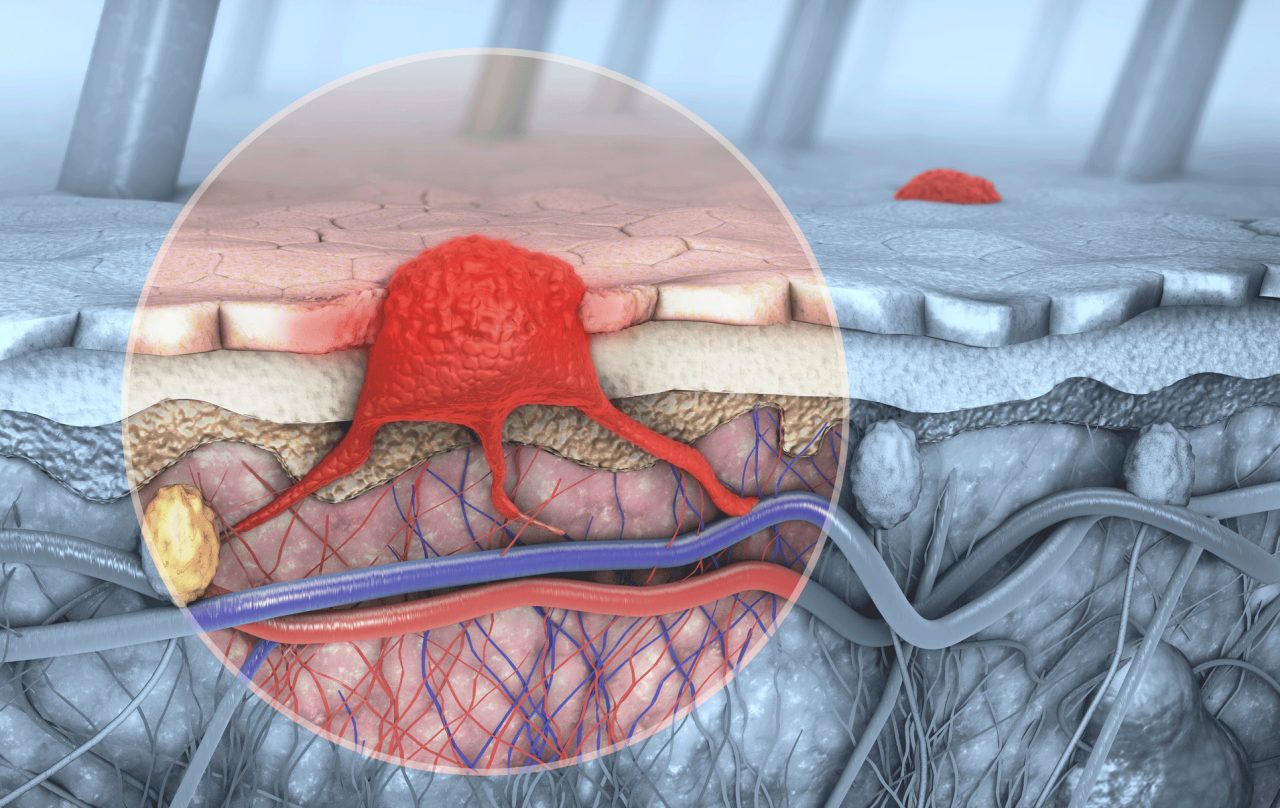What Does Skin Cancer Look Like?

What skin cancer looks like could take several forms. Have any lump, spot, sore, or other mark on your skin that is new or changing and doesn’t heal checked out.
Nearly all skin cancers aren’t serious if you catch them early, but that means it’s important to take action if you see something odd on your skin.
Skin cancer is the most common type of cancer, usually caused from too many hours in the sun (without protection) or on tanning beads. You don’t need x-rays or blood tests to find any skin cancer. You can see it on your skin in a mirror.
If you are at higher risk for skin cancer, check your skin regularly. If you have a personal or family history of skin cancer, be aware. You should also give yourself skin check-ups if you have low immunity or spend many hours in the sun, perhaps for your work.
The American Cancer Society provides instructions here. If you have a general idea of what skin cancer looks like — you can see photos here — you can catch it early.
YOU MIGHT ALSO LIKE: Our Skin Cancer center
What does skin cancer look like?
There are many kinds of skin cancer, and they each create different marks. They also need to be treated differently.
There are three main groups: basal cell skin carcinomas, squamous cell skin carcinomas, and melanomas.
The first two are by far the most common, showing up most often on your head and neck, areas exposed to the sun. They are unlikely to spread to other parts of your body and become life threatening, but they can grow and scar nearby tissues and organs or interrupt their functions. Some do spread and can even be fatal if not treated.
Types of skin cancer
Basal cell skin carcinomas can appear in various ways. You might see:
- A flat, firm, pale, or yellow area that resembles a scar
- A raised reddish patch that may also itch
- Small, pink or red, translucent, shiny, pearly bumps, with blue, brown, or black areas
- Pink growths with raised edges, sunk in the center
- Open sores that don’t heal, or that heal and return
Squamous cell skin carcinomas may appear as:
- A rough or scaly red patch, sometimes with a crust or bleeding
- Raised lumps, sometimes sunken in the center
- Open sores that don’t heal, or that heal and return
- Wart-like growths
Melanomas develop from melanocytes, the cells that give skin its color.
On men, melanomas are most likely to develop on the chest and back. On women, they tend to show up on the legs. Your neck and face are also common spots for a melanoma. Left untreated, melanomas are more likely than other skin cancers to spread and become difficult to treat.
Melanomas can form non-cancerous moles (your doctor may call it a nevus). A normal mole is typically:
- Even in color, either brown, tan, or black
- Flat or raised
- Round or oval
- Generally less than a pencil eraser wide
A mole not present at birth will usually arrive by your 20s, so when a new mole appears later on, make sure your doctor examines it. A mole may fade, but it should not change size or shape.
Any spot that is new or changing is a potential melanoma. This rule will help you know the signs, though it doesn’t cover every case:
- A is for Asymmetry: One half of a mole or birthmark does not look like the other half.
- B is for Border: The edges are irregular, ragged, notched, or blurred.
- C is for Color: The color is not the same all over and may include shades of brown or black, or sometimes have patches of pink, red, white, or blue.
- D is for Diameter: The spot is larger than 6 millimeters across.
- E is for Evolving: The mole is changing in size, shape, or color.
Tell your doctor if you have a sore that doesn’t heal, pigment from a spot spreads to surrounding skin, or a mole becomes itchy or tender or oozes or bleeds.
Other less common kinds of skin cancer, accounting for less than one percent of all skin cancer, include Merkel cell carcinoma, Kaposi sarcoma, cutaneous (skin) lymphoma, and skin adnexal tumors.
Updated:
May 25, 2023
Reviewed By:
Janet O’Dell, RN